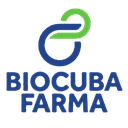Executive Secretary

IX Conferencia Científica Internacional sobre Desarrollo Agropecuario y Sostenibilidad
X Simposio de Medicina Veterinaria y Zootecnia
Resumen
Megathyrsus maximus sobresale por su alto rendimiento en climas tropicales, su adaptabilidad a diferentes condiciones edafoclimáticas y presentar los nutrientes necesarios con determinados días de rebrote. El objetivo del trabajo fue evaluar las potencialidades del Saboya (M. maximus) para incrementar la agrodiversidad en sistemas pecuarios de Manglaralto, Santa Elena. Se encuestaron 227 productores ganaderos y se procesaron los datos mediante análisis factorial y análisis de conglomerados. Para contribuir a generalizar el uso del Saboya y mejorar su manejo se diseñó un experimento que evaluó tres frecuencias de corte (30, 45, 60 días) en un diseño bloques al azar con tres réplicas. Se evaluó rendimiento, cenizas, extracto etéreo, proteína bruta, fibra bruta, extracto libre de nitrógeno, fibra neutro detergente, fibra ácido detergente, lignina y energía metabolizable. Esos datos se procesaron mediante análisis de varianza de clasificación doble y se aplicó Tukey para comparación de medias. Se extrajeron dos componentes principales que explicaron 84,8% de la variabilidad total, así como se clasificaron las fincas en 4 grupos. Los resultados experimentales indicaron que el rendimiento de materia seca aumentó (p<0,05) con la edad de corte, obteniéndose 5,53 tMS.ha-1 a 60 días de corte. La composición nutricional del Saboya cambió significativamente con la madurez de la planta, con aumento en componentes de la fibra y merma en PB y EM. Se concluye que el pasto Saboya es una especie que manifiesta potencialidades para incrementar la agrodiversidad en los sistemas pecuarios de Manglaralto, Santa Elena, con un conocimiento y uso medianamente limitados por los productores.
Abstract
Megathyrsus maximus stands out for its high performance in tropical climates, its adaptability to different edaphoclimatic conditions and presenting the necessary nutrients with certain regrowth days. The objective of the work was to evaluate the potential of the Savoy (M. maximus) to increase agrodiversity in livestock systems of Manglaralto, Santa Elena. 227 livestock producers were surveyed and the data were processed through factor analysis and cluster analysis. To help generalize the use of Savoy and improve its management, an experiment was designed that evaluated three cutting frequencies (30, 45, 60 days) in a randomized block design with three replications. Yield, ash, ether extract, crude protein, crude fiber, nitrogen-free extract, neutral detergent fiber, acid detergent fiber, lignin and metabolizable energy were evaluated. These data were processed using double classification analysis of variance and Tukey was applied for comparison of means. Two main components were extracted that explained 84.8% of the total variability, and the farms were classified into 4 groups. The experimental results indicated that dry matter yield increased (p<0.05) with cutting age, obtaining 5.53 tMS.ha-1 at 60 days of cutting. The nutritional composition of Savoy changed significantly with the maturity of the plant, with an increase in fiber components and a decrease in CP and ME. It is concluded that Savoy grass is a species that shows potential to increase agrodiversity in the livestock systems of Manglaralto, Santa Elena, with moderately limited knowledge and use by producers.
Sobre el ponente

Dra. VERÓNICA CRISTINA ANDRADE YUCAILLA

Discussion

